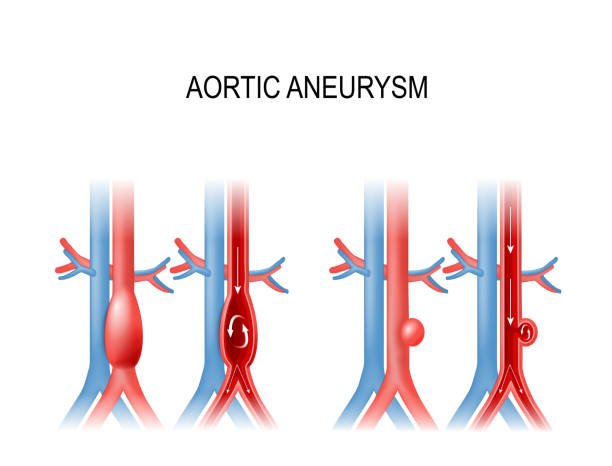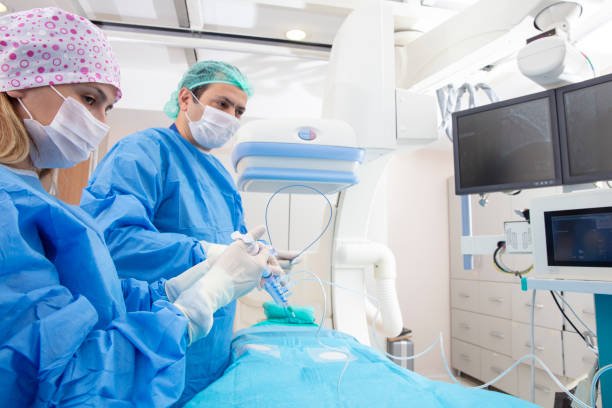
If it Breaks, it Will Kill You! Aortic Aneurysm Has a Mortality Rate of 50%, Causes, Symptoms and Treatment Instructions
The aorta is the largest blood vessel in the body. When the aorta swells abnormally, an “aortic aneurysm” will form. Aortic aneurysm is like an invisible bomb with no timing. Patients are usually unaware of its existence, but if it suddenly ruptures one day, it will cause massive bleeding and even death. Less than 50% of patients survive surgery to treat a ruptured aortic aneurysm.
Since aortic aneurysm is so dangerous, how can we prevent it on daily basis? What causes aortic aneurysm? Who is at high risk for aortic aneurysm? In this article, we introduce aortic aneurysm step by step, as well as the symptoms and treatment of aortic aneurysm.
What is an aortic aneurysm?
The structure of the aorta is like a wooden splint, which is divided into three layers of connective tissue: endothelium, muscle layer, and fibrous layer, with a diameter of about 2 to 3 cm. Under normal circumstances, the three layers of tissue are smooth and elastic. However, if any factors cause the artery wall to expand abnormally and make the aorta diameter greater than 1.5 times the normal diameter, it can be regarded as an aortic aneurysm.
Causes of aortic aneurysm
The causes of aortic aneurysm can be divided into congenital and acquired.
Aortic aneurysms caused by congenital factors include:
- Genetics
- Marfan disease
- Congenital vascular defects
Acquired factors include any factors that may affect blood vessel health:
- Hypertension, hyperlipidemia, diabetes
- Heart disease, heart infection or inflammation
- Atherosclerosis
- Smokes
- Obesity
- Aging
Men are four times more likely to suffer from aortic aneurysm than women, especially men over 50 to 60 years old, with high blood pressure or smoking habits.

Aortic aneurysm is asymptomatic in the early stages
The aorta runs through the chest and abdomen of the human body. Aortic aneurysms that occur in the chest are called thoracic aortic aneurysms. Aortic aneurysms that occur below the diaphragm and the bifurcation in the abdominal cavity are called abdominal aortic aneurysms.
Aortic aneurysms are often asymptomatic in the early stages, and patients only feel back pain and abdominal distension. It is not until the aortic aneurysm becomes too large that it compresses adjacent tissues like a balloon, and then further medical examination is possible and the patient is discovered to have an aortic aneurysm. Therefore, regular heart health check-ups are very important, especially for those at high risk of the disease.
Aortic aneurysms have different symptoms depending on where they occur. The following describes the symptoms of “thoracic aortic aneurysm” and “abdominal aortic aneurysm”:
- Thoracic aortic aneurysm:
Coughing, difficulty breathing, difficulty swallowing or hoarseness. 90% of patients will feel tearing chest pain. In severe cases, they may lose consciousness or die. - Abdominal aortic aneurysm:
Asymptomatic at first, but later it may cause abdominal pain as the aorta swells and compresses surrounding tissues. Sometimes the pain may also be transferred to the back or groin, so it is often misdiagnosed as general abdominal pain or kidney stones. If the diameter of the abdominal aortic aneurysm exceeds 5 cm, an obvious hard lump can be felt on the patient’s belly button.
Aortic aneurysms exceeding 5 cm in diameter require immediate surgical treatment
If the aortic aneurysm exceeds 5 cm, the chance of rupture and bleeding will increase significantly, resulting in excessive blood loss, shock and death. Therefore, if an aortic aneurysm exceeding 5 cm is found, doctors usually recommend surgical treatment.
Aortic aneurysms are treated differently depending on their size and location:
- Drug treatment:
only applicable to the early stage of aortic aneurysm. Drugs are used to control high blood pressure and slow down the expansion speed of aortic aneurysm. - Surgical treatment:
When the diameter of the aortic aneurysm exceeds 5 cm, or it expands too quickly. As for surgical treatment, it is divided into traditional laparotomy and intravascular stent placement, as explained below:
- Traditional laparotomy: an opening of about 30 to 40 cm is made in the abdomen, and the abdominal aorta is replaced with an artificial blood vessel. The disadvantages are large wounds, heavy bleeding, and long postoperative recovery time.
- Intravascular stent placement: Incisions are made from both sides of the groin to insert vascular stents, and the wound is about 4 to 6 centimeters. Compared with traditional surgery, it not only results in less blood loss but also shorter recovery time. However, the disadvantage is that the stent may leak or shift, and you need to return regularly to check whether there is any problem with the stent.
- Traditional laparotomy: an opening of about 30 to 40 cm is made in the abdomen, and the abdominal aorta is replaced with an artificial blood vessel. The disadvantages are large wounds, heavy bleeding, and long postoperative recovery time.













